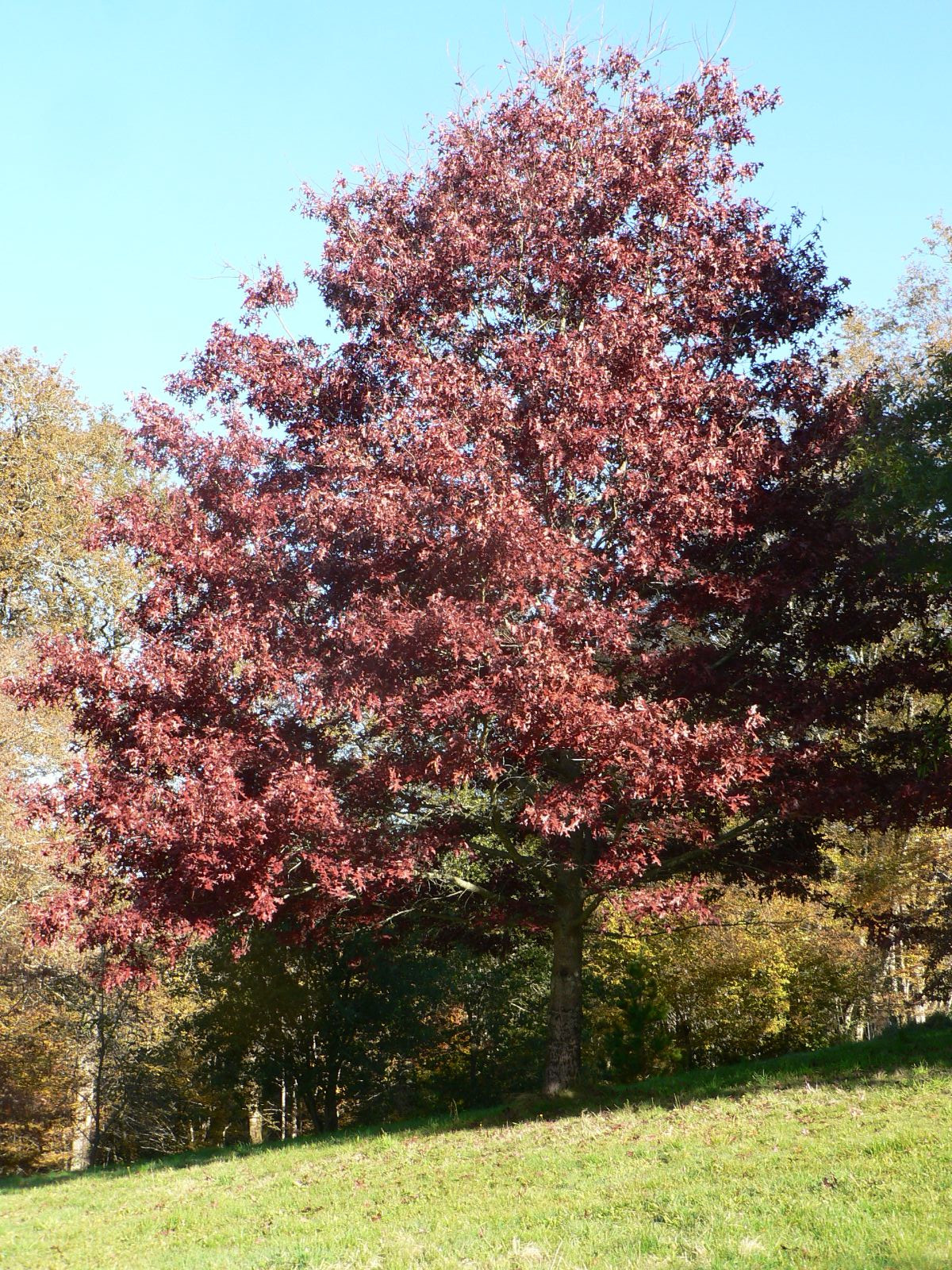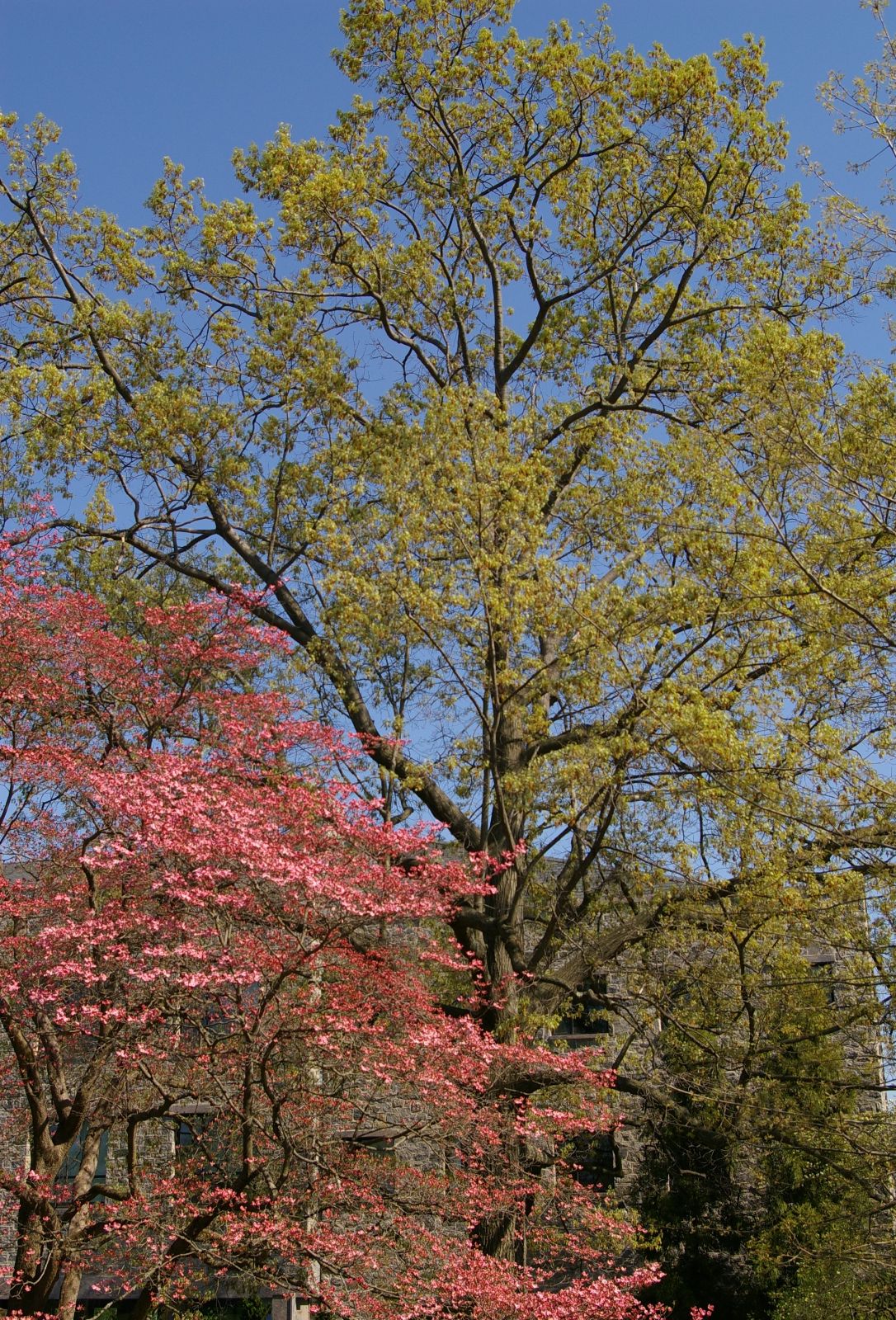Quercus coccinea
Sponsor
Kindly sponsored by
The Trees and Shrubs Online Oak Consortium
Credits
Article from Bean's Trees and Shrubs Hardy in the British Isles
Recommended citation
'Quercus coccinea' from the website Trees and Shrubs Online (treesandshrubsonline.
Genus
Common Names
- Scarlet Oak
Infraspecifics
Other taxa in genus
- Quercus acerifolia
- Quercus acherdophylla
- Quercus acrodonta
- Quercus acuta
- Quercus acutifolia
- Quercus acutissima
- Quercus afares
- Quercus affinis
- Quercus agrifolia
- Quercus alba
- Quercus aliena
- Quercus alnifolia
- Quercus aquifolioides
- Quercus arizonica
- Quercus arkansana
- Quercus aucheri
- Quercus augustini
- Quercus austrina
- Quercus × auzendei
- Quercus baloot
- Quercus bambusifolia
- Quercus baronii
- Quercus bicolor
- Quercus brantii
- Quercus buckleyi
- Quercus canariensis
- Quercus canbyi
- Quercus candicans
- Quercus castanea
- Quercus castaneifolia
- Quercus cerris
- Quercus chenii
- Quercus chrysolepis
- Quercus coccifera
- Quercus cocciferoides
- Quercus conspersa
- Quercus crassifolia
- Quercus crassipes
- Quercus delavayi
- Quercus dentata
- Quercus deserticola
- Quercus dolicholepis
- Quercus douglasii
- Quercus dumosa
- Quercus durifolia
- Quercus eduardii
- Quercus ellipsoidalis
- Quercus emoryi
- Quercus engelmannii
- Quercus engleriana
- Quercus euboica
- Quercus eugeniifolia
- Quercus fabri
- Quercus faginea
- Quercus falcata
- Quercus floribunda
- Quercus frainetto
- Quercus franchetii
- Quercus fruticosa
- Quercus fusiformis
- Quercus gambelii
- Quercus garryana
- Quercus geminata
- Quercus georgiana
- Quercus germana
- Quercus gilliana
- Quercus gilva
- Quercus glabrescens
- Quercus glauca
- Quercus graciliformis
- Quercus gravesii
- Quercus griffithii
- Quercus grisea
- Quercus guyavifolia
- Quercus hartwissiana
- Quercus hemisphaerica
- Quercus × hispanica
- Quercus hondae
- Quercus hypargyrea
- Quercus hypoleucoides
- Quercus ilex
- Quercus ilicifolia
- Quercus imbricaria
- Quercus incana
- Quercus infectoria
- Quercus insignis
- Quercus ithaburensis
- Quercus kelloggii
- Quercus × kewensis
- Quercus kiukiangensis
- Quercus laceyi
- Quercus laevis
- Quercus lamellosa
- Quercus lanata
- Quercus lancifolia
- Quercus laurifolia
- Quercus laurina
- Quercus × leana
- Quercus leucotrichophora
- Quercus × libanerris
- Quercus libani
- Quercus lobata
- Quercus lobbii
- Quercus lodicosa
- Quercus longinux
- Quercus longispica
- Quercus look
- Quercus × ludoviciana
- Quercus macranthera
- Quercus macrocalyx
- Quercus macrocarpa
- Quercus macrolepis
- Quercus marilandica
- Quercus mexicana
- Quercus michauxii
- Quercus mongolica
- Quercus monimotricha
- Quercus montana
- Quercus morii
- Quercus muehlenbergii
- Quercus myrsinifolia
- Quercus myrtifolia
- Quercus nigra
- Quercus × numidica
- Quercus oblongifolia
- Quercus obtusata
- Quercus oglethorpensis
- Quercus oxyodon
- Quercus pagoda
- Quercus palmeri
- Quercus palustris
- Quercus pannosa
- Quercus parvula
- Quercus petraea
- Quercus phellos
- Quercus phillyreoides
- Quercus planipocula
- Quercus poilanei
- Quercus polymorpha
- Quercus pontica
- Quercus prinoides
- Quercus pubescens
- Quercus pyrenaica
- Quercus rehderiana
- Quercus reticulata
- Quercus robur
- Quercus rotundifolia
- Quercus rubra
- Quercus rugosa
- Quercus rysophylla
- Quercus sadleriana
- Quercus salicina
- Quercus sartorii
- Quercus × schneideri
- Quercus schottkyana
- Quercus semecarpifolia
- Quercus senescens
- Quercus serrata
- Quercus sessilifolia
- Quercus setulosa
- Quercus shumardii
- Quercus sinuata
- Quercus spinosa
- Quercus stellata
- Quercus stenophylloides
- Quercus suber
- Quercus subspathulata
- Quercus tarokoensis
- Quercus tatakaensis
- Quercus texana
- Quercus tomentella
- Quercus trojana
- Quercus tungmaiensis
- Quercus turbinella
- Quercus × turneri
- Quercus undulata
- Quercus utahensis
- Quercus utilis
- Quercus uxoris
- Quercus variabilis
- Quercus velutina
- Quercus virginiana
- Quercus vulcanica
- Quercus warburgii
- Quercus wislizenii
- Quercus xalapensis
A deciduous tree up to 70 or 80 ft high; young shoots warted, not downy; winter-buds downy towards the points, up to 1⁄4 in. long. Leaves 3 to 6 in. long, 21⁄2 to 41⁄2 in. wide (in young trees as much as 6 in. wide), obovate or oval, tapered at the base, deeply seven- sometimes nine-lobed, the lobes oblong or triangular, coarsely and unequally toothed at the apex, dark green above, paler beneath, both sides lustrous and glabrous, except that there are sometimes tufts of brownish down in the vein-axils beneath; stalk 11⁄2 to 21⁄2 in. long, glabrous, yellow. Acorns 1⁄2 to 1 in. long, two-thirds as wide, one-third to one-half enclosed in a deep, thin-edged cup.
Native of eastern N. America; introduced about the end of the 17th century. The true scarlet oak retains its leaves until November or December, and for the last six or eight weeks they are of a brilliant red, and make one of the richest of autumnal effects. But early frost may cause the leaves to wither before they have coloured, and trees raised from seed cannot be relied on always to give the autumn colouring expected of this species.
In its native country the scarlet oak does not attain such a large ultimate size as the red oak (Q. rubra) and reaches maturity at an earlier age. It is less demanding in its soil requirements, and is commonly found on dry, rather acid soils. Early this century, Elwes and Henry remarked on the scarcity of the scarlet oak in Britain and knew of no better tree than one at Arley Castle, measuring 78 × 61⁄4 ft (1904). The following specimens, recorded in recent years, are probably all less than a century old: Kew, by Main Gate, 56 × 61⁄4 ft (1967), near Oak collection, 60 × 61⁄4 ft (1965); Syon House, London, 70 × 81⁄4 ft (1968); Osterley Park, London, four trees 65 to 70 ft high, 53⁄4 to 63⁄4 ft in girth (1965); Windsor Great Park, China Island, 75 × 9 ft (1964); Frensham Hall, nr Haslemere, Surrey, pl. 1905, 80 × 61⁄4 ft (1968); Nymans, Sussex.pl. 1902, 80 × 71⁄4 ft (1968); Sheffield Park, Sussex, four trees 70 to 75 ft high, 7 to 81⁄4 ft in girth (1968); Grayswood Hill, Surrey, 80 × 81⁄4 ft (1971); Westonbirt, Glos., opposite Wigmore Bottom, 80 × 53⁄4 ft (1967), Circular Drive, 78 × 81⁄4 ft (1969), three in The Downs pl. 1926, 57 to 65 ft high, 5 to 6 ft in girth; Saltram House, Devon, 77 × 71⁄4 ft (1970); Killerton, Devon, in Park 55 × 7 ft (1970); Sandon Park, Staffs., 74 × 93⁄4 ft (1969).
From the Supplement (Vol. V)
specimens: Kew, by Main Gate, 52 × 63⁄4 ft (1973) and, near Oak Collection, 75 × 7 ft (1979); Syon House, London, 80 × 91⁄4 ft (1982); Osterley Park, London, 98 × 61⁄4 ft, 85 × 61⁄2 ft and 80 × 7 ft (1982); Sheffield Park, Sussex, 80 × 9 ft (1980); Burford House, Surrey, 85 × 91⁄2 ft (1984); Grayswood Hill, Haslemere, Surrey, the tree mentioned is Q. rubra; Bramshott Hall, Hants, 82 × 101⁄2 ft, a very fine tree (1983); Westonbirt, Glos., opposite Wigmore Bottom, 92 × 61⁄2 ft (1984); Killerton, Devon, in Park, 55 × 7 ft (1970).
cv. ‘Splendens’. – The tree at Kew, grafted at 1 ft, measures 75 × 81⁄2 ft, and the original tree in the Knap Hill Nursery, Surrey, is 66 ft high and almost the same in girth as the Kew tree (1984). There is an example in the Savill Garden, Windsor Great Park, of 82 × 63⁄4 ft (1982).




